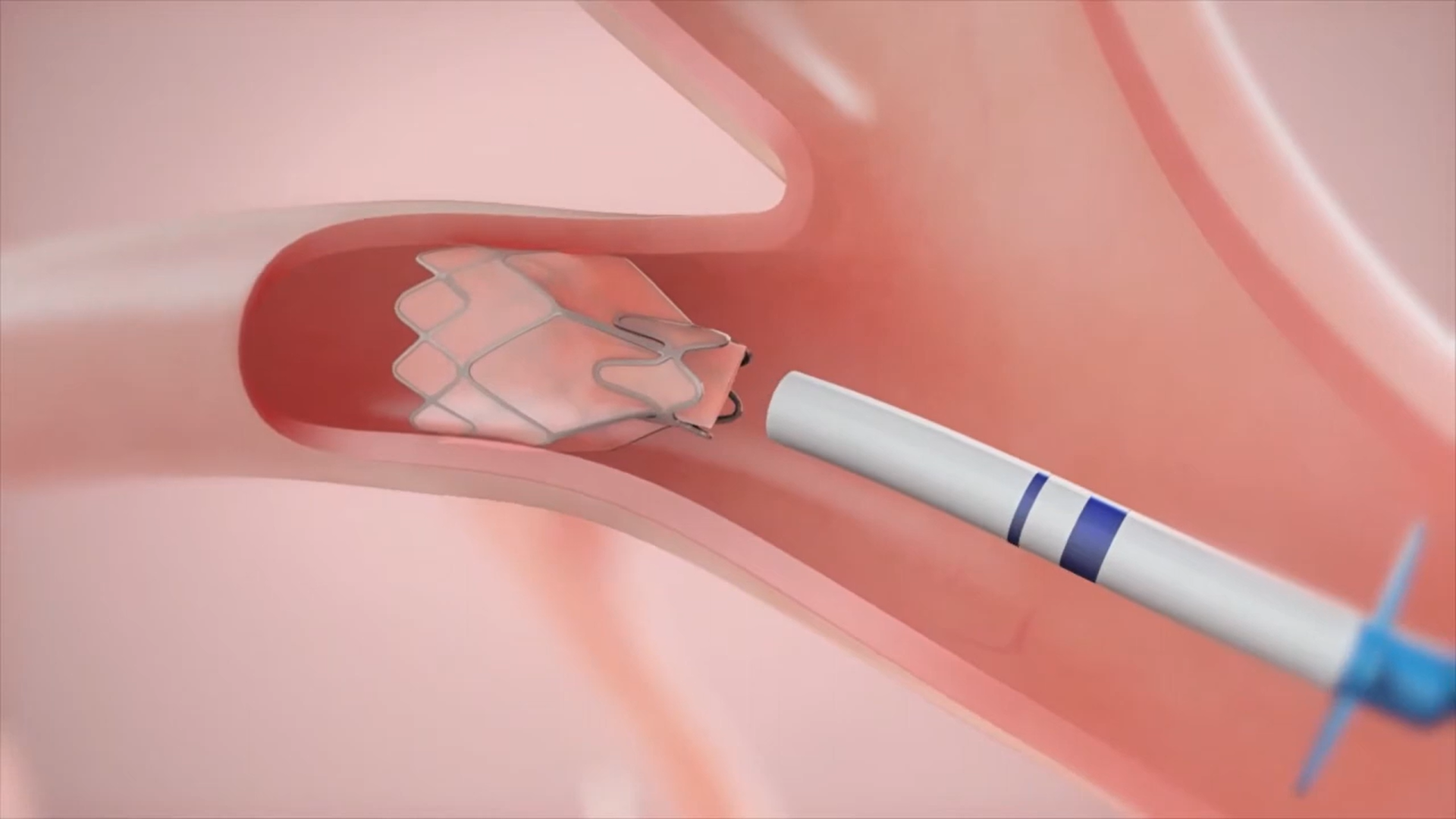Breathe easier,
Do more & Enjoy life.
Endobronchial valve placement is a minimally invasive treatment option for COPD/ Emphysema.
What is COPD?
COPD, or chronic obstructive pulmonary disease, is a persistent lung condition that hinders normal breathing. It is frequently linked to prolonged smoking or exposure to harmful substances.


Signs and Symptoms
The most common signs and symptoms include:
- Fatigue
- Wheezing
- Frequent respiratory infections
- Persistent cough (dry or with mucus)
- Bluish nails and lips with slight exertion
- Shortness of breath during routine activities
If you’re concerned about the quality respiratory health, you should talk to your doctor. Some of the symptoms of emphysema and chronic bronchitis overlap.
Ways to Treat COPD/ Emphysema
Medications

Long Term Oxygen Therapy (LTOT)

Endobronchial Valve Placement (EBV)

Lung Volume Reduction Surgery (LVRS)

Endobronchial Valve Placement
For COPD/ Emphysema
Endobronchial valve placement is a minimally invasive procedure where one-way valves are inserted into the airways of a specific lung lobe. These valves facilitate exhalation, reduce air trapping, and improve lung function.

How It Works
These tiny, one-way valves are inserted into the air passages, redirecting airflow away from damaged or diseased lung regions. This helps to reduce hyperinflation in the affected areas and improves overall lung function.
By preventing air from entering the diseased portions of the lungs during inhalation, EBVs allow for more efficient exhalation, relieving symptoms and enhancing the patient's ability to breathe.

You Might Be a Candidate For EBV if..
- Diagnosed with COPD or Emphysema
- Breathing difficulties despite taking medications as directed
Is EBV Right For Me?
Endobronchial valve placement might be just the solution
you were looking for.
Frequently Asked Questions
Endobronchial valve placement improves COPD symptoms by strategically inserting one-way valves into the airways, facilitating better lung function and reducing air trapping.
No, it is a minimally invasive procedure performed by pulmonologists. It involves inserting valves into specific lung lobes to enhance respiratory efficiency.
Individuals with COPD, particularly those with a predominant presence of emphysema, may be considered for this treatment option after a thorough evaluation by healthcare professionals.
The procedure aims to alleviate COPD symptoms, such as shortness of breath, by improving lung function. It can also help in reducing air leaks in certain cases.
While generally safe, endobronchial valve placement may have some risks. These can be discussed with healthcare providers and may include complications like pneumothorax or infection. It’s important to weigh the potential benefits against any risks before deciding on the treatment.
Breathe easier,
Do more & Enjoy life.
Endobronchial valve placement is a minimally invasive treatment option for COPD/ Emphysema.
What is COPD?

COPD, or chronic obstructive pulmonary disease, is a persistent lung condition that hinders normal breathing. It is frequently linked to prolonged smoking or exposure to harmful substances.
Signs and Symptoms

The most common signs and symptoms include:
- Fatigue
- Wheezing
- Frequent respiratory infections
- Persistent cough (dry or with mucus)
- Bluish nails and lips with slight exertion
- Shortness of breath during routine activities
If you’re concerned about the quality respiratory health, you should talk to your doctor. Some of the symptoms of emphysema and chronic bronchitis overlap.
Ways to Treat COPD/ Emphysema
Medications

Long Term Oxygen Therapy (LTOT)

Endobronchial Valve Placement (EBV)

Lung Volume Reduction Surgery (LVRS)

Endobronchial Valve Placement
For COPD/ Emphysema
Endobronchial valve placement is a minimally invasive procedure where one-way valves are inserted into the airways of a specific lung lobe. These valves facilitate exhalation, reduce air trapping, and improve lung function.

How It Works
These tiny, one-way valves are inserted into the air passages, redirecting airflow away from damaged or diseased lung regions. This helps to reduce hyperinflation in the affected areas and improves overall lung function.
By preventing air from entering the diseased portions of the lungs during inhalation, EBVs allow for more efficient exhalation, relieving symptoms and enhancing the patient's ability to breathe.
You Might Be a Candidate For EBV if..

- Diagnosed with COPD or Emphysema
- Breathing difficulties despite taking medications as directed
Is EBV Right For Me?
Endobronchial valve placement might be just the solution you were looking for.
Frequently Asked Questions
Endobronchial valve placement improves COPD symptoms by strategically inserting one-way valves into the airways, facilitating better lung function and reducing air trapping.
No, it is a minimally invasive procedure performed by pulmonologists. It involves inserting valves into specific lung lobes to enhance respiratory efficiency.
Individuals with COPD, particularly those with a predominant presence of emphysema, may be considered for this treatment option after a thorough evaluation by healthcare professionals.
The procedure aims to alleviate COPD symptoms, such as shortness of breath, by improving lung function. It can also help in reducing air leaks in certain cases.
While generally safe, endobronchial valve placement may have some risks. These can be discussed with healthcare providers and may include complications like pneumothorax or infection. It’s important to weigh the potential benefits against any risks before deciding on the treatment.
Breathe easier,
Do more & Enjoy life.
Endobronchial valve placement is a minimally invasive treatment option for COPD/ Emphysema.
What is COPD?

COPD, or chronic obstructive pulmonary disease, is a persistent lung condition that hinders normal breathing. It is frequently linked to prolonged smoking or exposure to harmful substances.
Signs and Symptoms

The most common signs and symptoms include:
- Fatigue
- Wheezing
- Frequent respiratory infections
- Persistent cough (dry or with mucus)
- Bluish nails and lips with slight exertion
- Shortness of breath during routine activities
If you’re concerned about the quality respiratory health, you should talk to your doctor. Some of the symptoms of emphysema and chronic bronchitis overlap.
Ways to Treat COPD/ Emphysema
Medications

Long Term Oxygen Therapy (LTOT)

Endobronchial Valve Placement (EBV)

Lung Volume Reduction Surgery (LVRS)

Endobronchial Valve Placement For COPD/ Emphysema
Endobronchial valve placement is a minimally invasive procedure where one-way valves are inserted into the airways of a specific lung lobe. These valves facilitate exhalation, reduce air trapping, and improve lung function.

How It Works
These tiny, one-way valves are inserted into the air passages, redirecting airflow away from damaged or diseased lung regions. This helps to reduce hyperinflation in the affected areas and improves overall lung function.
By preventing air from entering the diseased portions of the lungs during inhalation, EBVs allow for more efficient exhalation, relieving symptoms and enhancing the patient's ability to breathe.
You Might Be a Candidate For EBV if..

- Diagnosed with COPD or Emphysema
- Breathing difficulties despite taking medications as directed
Is EBV Right For Me?
Endobronchial valve placement might be just the solution you were looking for.
Frequently Asked Questions
Endobronchial valve placement improves COPD symptoms by strategically inserting one-way valves into the airways, facilitating better lung function and reducing air trapping.
No, it is a minimally invasive procedure performed by pulmonologists. It involves inserting valves into specific lung lobes to enhance respiratory efficiency.
Individuals with COPD, particularly those with a predominant presence of emphysema, may be considered for this treatment option after a thorough evaluation by healthcare professionals.
The procedure aims to alleviate COPD symptoms, such as shortness of breath, by improving lung function. It can also help in reducing air leaks in certain cases.
While generally safe, endobronchial valve placement may have some risks. These can be discussed with healthcare providers and may include complications like pneumothorax or infection. It’s important to weigh the potential benefits against any risks before deciding on the treatment.
